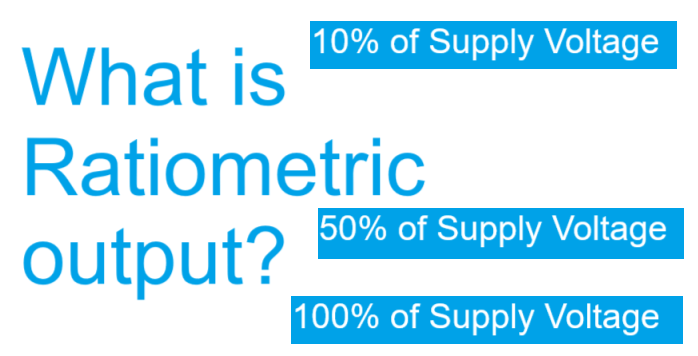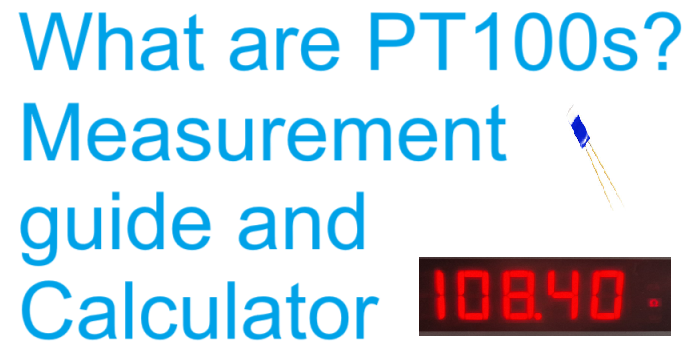What is Ratiometric ouput?
Ratiometric output is a voltage signal from the Sensor that is proportional to the applied supply voltage.
The output voltage is a percentage of the supply voltage at each calibrated point so, 10% at the lowest limit and 90% at the highest limit.
The Ratiometric output illustration below shows the ratio metric output of the sensor and how it behaves.

Ratiometric Level Sensor
Ratiometric Pressure Sensor
Ratiometric output summary
Keynote to summarise and remember the output Voltage is proportional to the Supply Voltage. using a pressure sensor example
- Zero pressure – output Voltage 10% of the supply voltage
- Midpoint pressure – output Voltage is 50% of the supply voltage
- Full scale pressure – output Voltage 90% of the supply voltage
Key Points for Ratiometric pressure sensors to remember are
- Output is 10% to 90% of the supply.
- Low Power.
- If the supply Voltage changes the output value will change.
Example 1 5V 0-10 bar Ratiometric output pressure sensor
Supply = 5V
Pressure Range = 0-10 Bar
Pressure Span = 10 Bar
Voltage Output = 10% of 5V =0.5V to 90% of 5V = 4.5%
Voltage Output = 0.5V to 4.5V
Voltage Span = ZeroVoltage-FullScaleVoltage 4.5-0.5=4V
Voltage Span = 4.5V - 0.5V = 4V
Therefore
- 0 Bar =0.5V =10% of supply Voltage
- 5 Bar = 2.5V = 50% of supply Voltage
- 10 Bar = 4.5V 90% of supply Voltage
- 0% of sensor input =0.5V =10% of supply Voltage
- 50% of sensor input = 2.5V = 50% of supply Voltage
- 100% of sensor input = 4.5V = 90% of supply Voltage
How to calculate pressure from Ratiometric output

If the output voltage is 2.5V using the formula above we have.

These equations are simple enough for most Microcontrollers making them a wise choice for embedded systems.




